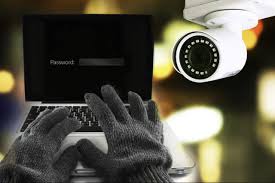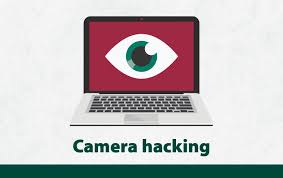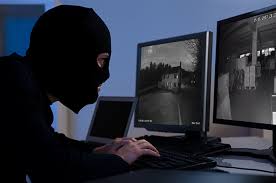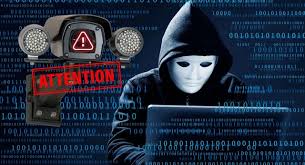In today’s digital age, cameras are everywhere — in smartphones, laptops, smart TVs, doorbells, and even refrigerators. These devices offer convenience and connectivity, but they also open the door to new privacy risks. One of the growing concerns in modern cybersecurity is open camera access — when an app or program has the ability to use your device’s camera, sometimes without your full knowledge or consent.
This article explores what open camera access means, how it works, what risks it carries, and how to protect yourself in a world where your lens could be turned against you.

Table of Contents
What Is Open Camera Access?
Open camera access refers to the ability of apps, software, or systems to activate and use your camera — often through granted permissions. Ideally, this access should only be granted by users who knowingly approve it. However, there are cases where apps request camera access for unnecessary reasons, or even worse, gain access through malicious code or vulnerabilities.
This access can occur on:
- Smartphones and tablets
- Laptops and desktops with webcams
- Smart home devices (like baby monitors or security cameras)
- IoT devices (Internet of Things)
How Apps Request Camera Access
Apps must typically request permission before using your camera. Here’s how it works:
- Android: Uses a permission system. When an app wants to access the camera, it must ask for permission. You’ll see a pop-up saying something like “Allow [App] to access your camera?”
- iOS (Apple): Works similarly, giving you control over what each app can access.
- Web browsers: Sites can also ask for camera access for things like video calls or ID verification. You’ll get a prompt at the top of your browser.
However, some apps abuse these permissions — either by misleading users or continuing to access the camera in the background.
The Hidden Dangers of Open Camera Access
When camera access is left open or unmanaged, several privacy and security threats can arise.
1. Spyware and Malware Attacks
Some malicious software is designed to secretly access your webcam or phone camera and stream or record video without your knowledge. This type of spyware can:
- Record private moments
- Capture sensitive information (like typed passwords)
- Be used for blackmail or extortion (a crime known as “sextortion”)
Many victims don’t even know they’ve been watched until they receive a threat or see evidence posted online.
2. Stalkerware and Domestic Abuse
Stalkerware is a type of surveillance software often used in abusive relationships. It can be installed secretly on a victim’s phone to monitor their calls, texts, and even use the camera to spy in real-time.
Unlike typical spyware, stalkerware often masquerades as harmless apps with generic names like “System Cleaner” or “Battery Booster.”
3. Exploiting Smart Cameras and IoT Devices
Internet-connected cameras — like baby monitors, smart doorbells, or home surveillance systems — can be accessed remotely. If not properly secured, hackers can gain control by:
- Guessing default usernames/passwords
- Exploiting software vulnerabilities
- Accessing them through insecure Wi-Fi networks
There have been real-world cases of hackers speaking to children through baby monitors, or watching unsuspecting families in their homes.
4. Unauthorized Data Collection
Even if an app isn’t trying to spy maliciously, it might harvest data from your camera activity — like facial expressions, surroundings, or QR scans — to create a digital profile. This information can be used for marketing, surveillance, or sold to third parties.
Signs Your Camera May Be Accessed Without Permission
If you’re worried your device camera might be accessed without your knowledge, here are some warning signs:
- The camera light turns on unexpectedly
- Battery drains quickly (especially on mobile devices)
- Your phone or computer heats up while idle
- Unknown apps appear in your list of installed software
- You hear clicking sounds or see flashing lights from webcams

How to Protect Yourself from Unauthorized Camera Access
1. Check App Permissions Regularly
Whether you use Android or iOS, you can go into your settings and review which apps have camera access.
- On Android:
Settings > Privacy > Permission Manager > Camera - On iPhone:
Settings > Privacy & Security > Camera
If an app doesn’t absolutely need the camera, deny permission. Some apps ask for access just for convenience (like social media filters), not necessity.
2. Update Software and Firmware
Outdated systems often have unpatched vulnerabilities that hackers can exploit. Always keep your:
- Smartphone OS
- Apps
- Web browsers
- Router firmware
- IoT device software
fully updated.
3. Use Antivirus and Anti-Spyware Tools
Install reputable cybersecurity tools that can detect:
- Spyware and stalkerware
- Apps using permissions in the background
- Unusual network activity
Examples include Malwarebytes, Bitdefender, or Norton Mobile Security.
4. Cover Your Camera
One of the simplest (yet effective) measures is to physically block your camera when not in use. Use:
- Webcam covers
- Post-it notes or tape
- Laptop privacy sliders
Even Facebook’s Mark Zuckerberg and former FBI Director James Comey are known to do this.
5. Secure Smart Cameras
If you use internet-connected cameras in your home:
- Change default usernames and passwords immediately
- Enable two-factor authentication if available
- Use encrypted cloud storage (or disable remote access if not needed)
- Regularly update the firmware
Consider buying smart cameras only from trusted manufacturers with a good security reputation.
6. Avoid Unknown Links or Downloads
Many camera hacks begin with phishing emails, rogue apps, or infected links. Be cautious when:
- Opening emails with attachments
- Clicking suspicious links on social media
- Downloading third-party apps outside the official app store
CLICK HERE TO OPEN

The Legal Side of Open Camera Access
Accessing someone’s camera without permission is illegal in most countries and is considered a serious privacy violation. Depending on jurisdiction, it can fall under:
- Invasion of privacy laws
- Cyberstalking or harassment charges
- Unauthorized surveillance regulations
- Federal hacking laws (like the Computer Fraud and Abuse Act in the U.S.)
Those found guilty can face fines, imprisonment, and permanent criminal records.
Even accidentally leaving a camera open — like in a Zoom call — can lead to embarrassment or job consequences. It’s always best to stay in control of your devices.
Open Camera Access: Use Cases for Good
While the risks are real, open camera access can also serve positive purposes, such as:
- Video conferencing (Zoom, Teams, Google Meet)
- Telemedicine and remote diagnosis
- Smart security systems for homes and offices
- Barcode and QR scanning
- Augmented reality experiences (games, shopping, education)
The key is intent and informed consent. You should always know when, why, and how your camera is being used.
Final Thoughts
Open camera access is a double-edged sword. While it fuels modern convenience, connectivity, and innovation, it also exposes users to serious privacy and security risks. Understanding how camera access works — and the potential dangers — is the first step toward protecting yourself.
The next time an app asks for permission to use your camera, don’t just tap “Allow” automatically. Think about whether it’s truly necessary, and stay alert to unusual behavior from your devices.
Your camera can open a window to the world — but make sure it doesn’t become a window into your life for strangers.
Read more:https://blog.nfds.xyz/wp-admin/post.php?post=198&action=edit

